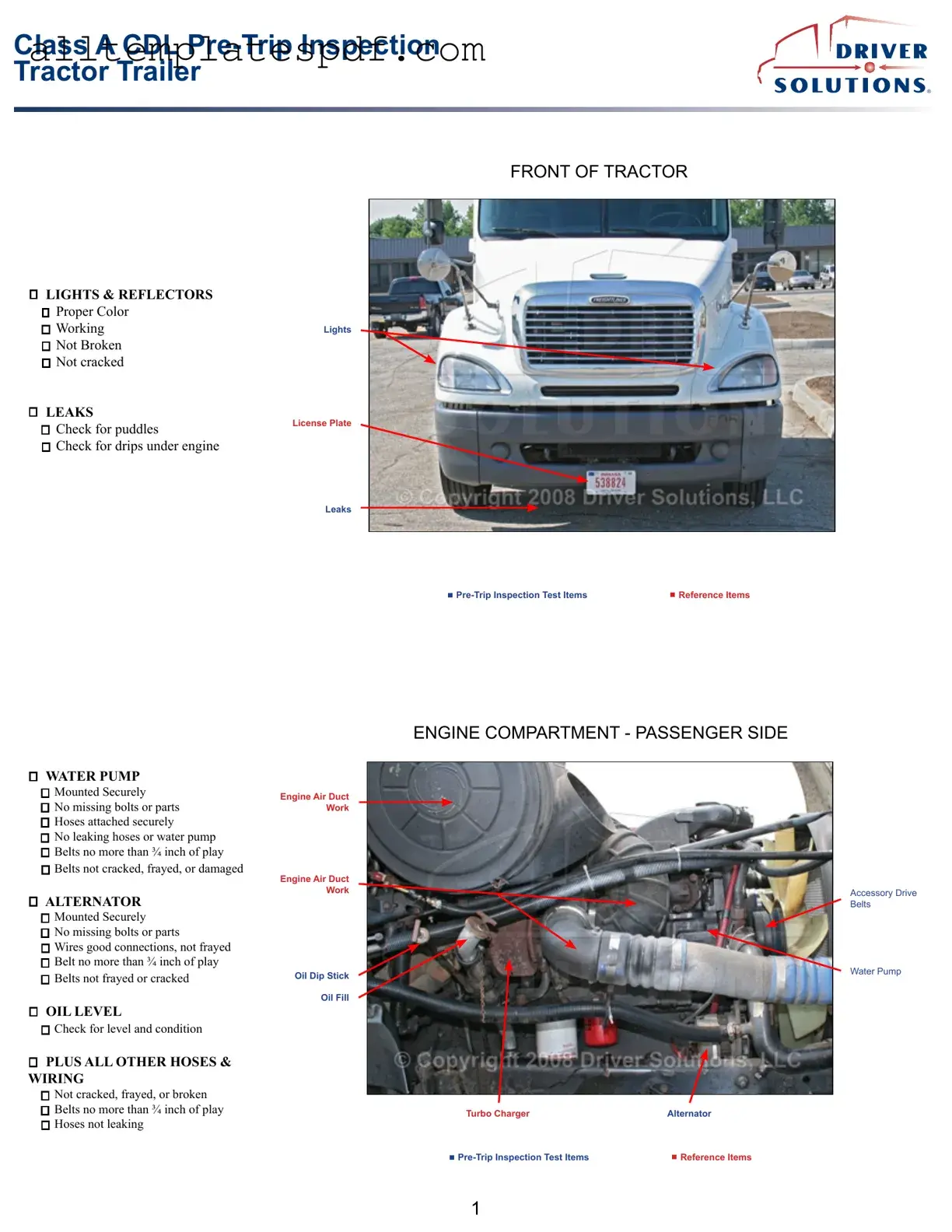Filling out the Pre Trip Inspection Checklist form is crucial for ensuring vehicle safety and compliance. However, many individuals make common mistakes that can lead to serious consequences. One frequent error is failing to complete the checklist in its entirety. Skipping sections may seem harmless, but each part is designed to identify potential issues that could compromise safety on the road.
Another mistake is not being thorough when inspecting each item. A quick glance might not reveal underlying problems. For instance, checking tire pressure should involve more than just looking at the tires; it requires using a gauge to ensure they meet the recommended specifications. Neglecting this step can result in tire blowouts or decreased fuel efficiency.
Some people rush through the inspection, which can lead to overlooked details. Taking your time is essential. Each component, from brakes to lights, deserves careful examination. A missed warning light or a worn brake pad can lead to dangerous situations while driving.
Inadequate documentation is also a common pitfall. Simply marking “OK” without providing additional notes can create confusion later. If an issue arises, having detailed notes can help in identifying when and where a problem occurred, making it easier to address.
Another mistake involves not using the correct tools or equipment during the inspection. For example, failing to use a flashlight when checking under the hood can result in missing critical issues, like leaks or worn belts. Proper tools ensure a comprehensive evaluation.
People often forget to check the emergency equipment. Items like fire extinguishers, first aid kits, and flares should be inspected regularly. A vehicle can be in perfect working order, but lacking essential emergency gear can put everyone at risk.
Some individuals do not keep the checklist updated. Using an old form can lead to confusion about the vehicle's current condition. It’s vital to use the most recent version of the checklist to reflect any changes in regulations or vehicle specifications.
Failing to involve other team members can also be a mistake. If multiple drivers use the same vehicle, sharing the responsibility of the inspection can ensure thoroughness. Communication about the vehicle’s condition among drivers is key to maintaining safety.
Lastly, not reviewing the checklist after completion can lead to errors going unnoticed. A second look can help catch mistakes or omissions that may have been overlooked initially. Taking a moment to review can save time and enhance safety in the long run.
